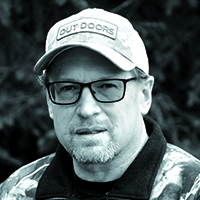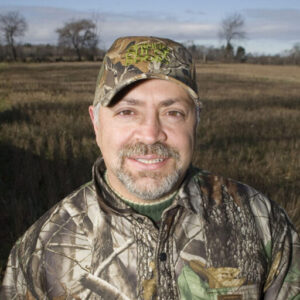What would a turkey be doing right now? As the day begins, toms will be listening for the yelps of nearby hens. But once the toms fly down from their roost and meet up with hens, the answer to that question becomes less clear. Thinking like a turkey can help clarify things, often putting more birds in front of hunters. I saw this firsthand a few years ago while hunting in Michigan with Al Stewart. The Ontario native worked as the state’s upland bird biologist during the reintroduction of wild turkeys across the US, putting him at the forefront of trap-and-transfer programs. With decades of turkey hunting experience, Stewart has probably spent more time observing these birds than anyone else. Stewart and I set up near roosted birds and had an engaging conversation with some toms. However, after they flew down to meet hens, the toms walked away, never getting close enough for us to take a shot. Stewart then spoke with the landowner about where the birds roosted, analyzed where they might be during the day, then made plans for the following morning. “When I’m out turkey hunting, I always think ‘If I was a turkey, what would I be doing right now?’” Stewart said. This paid off when I harvested a turkey that afternoon after numerous birds responded to the call. Since then, I’ve found that thinking like a turkey brings more birds in front of my gun barrel. Ask yourself... One question you need to ask yourself is: What do turkeys do after the early morning hours when so many of us are hunting? While there are no hard-and-fast rules, turkeys generally aren’t in fields much during midday. Which means they’re heading into the woods. That’s exactly what we did when I hunted with Stewart. We tried to position ourselves between where we thought the birds would be in the middle of the day and where they would go in the evening before roosting. In Ontario, hunting ends at 7 p.m., but turkeys may not roost until after 8 p.m. A hunter who thinks like a turkey, however, would be in the area during the late afternoon, waiting for the birds to return. Hens that have been bred will spend the day sitting on their nests, creating a prime opportunity. Late morning is another excellent time to hunt, especially after hens have returned to their nests. I
Please log into your OFAH Community account to access this content. Not an OFAH member or Ontario OUT of DOORS Subscriber? Follow the links below to join or subscribe and gain access to exclusive online content.




Contact Information
PO Box 2800 / 4601 Guthrie Dr.
Peterborough, Ontario Canada K9J 8L5
Phone: 705-748-OFAH (6324)
Fax: 705-748-9577
Join Our Newsletter
Watch
Shop
Follow